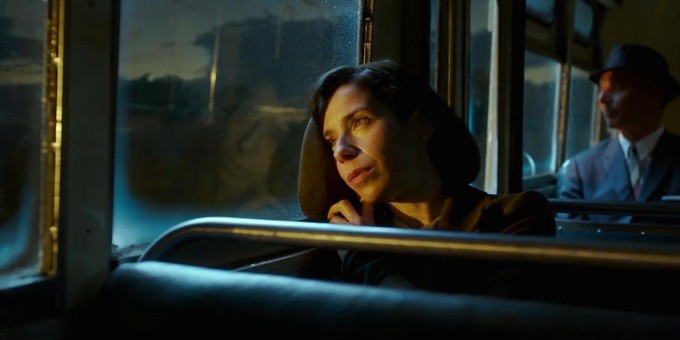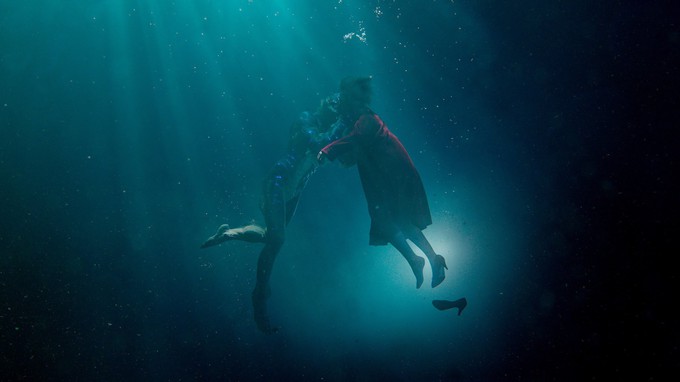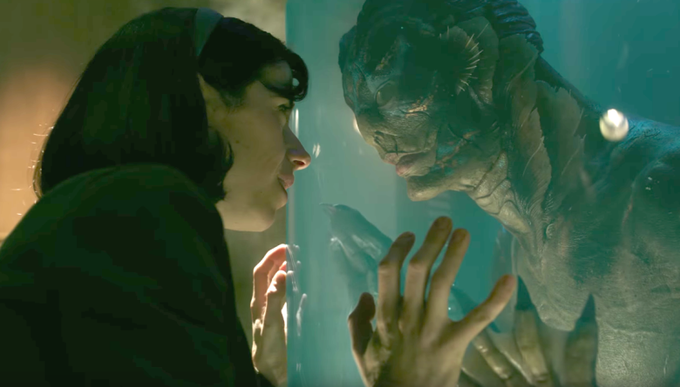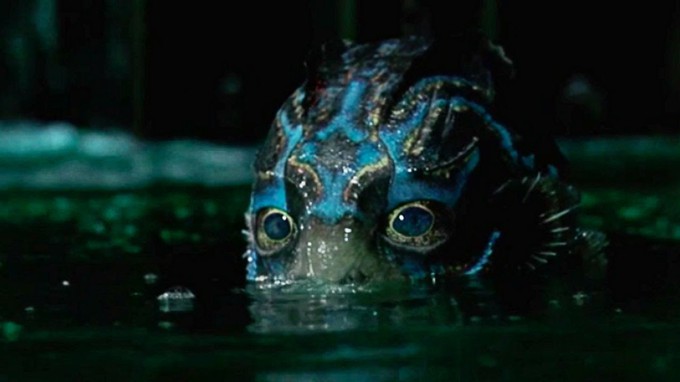
As a huge fan of “Pan’s Labyrinth”, naturally I was excited to see another Guillermo Del Toro dark fairy tale, however I already had been slightly put off with the odd concept that was portrayed through even the first teasers of the film. What I acquired about the premise from them was “A mute girl’s wet dream about Abraham from Hellboy”.

The film follows a young mute woman named Elisa during the Cold War era. She lives her life day to day on a fairly strict schedule. This includes very limited personal time, doing mostly the exact thing every day, even regularly saying yes to a piece of pie, and then never finishing it because she doesn’t like it. Elisa works as a cleaning lady at a scientific facility run by the government. One day a live subject is brought into the facility from South America, where the indigenous people that worshiped it as a god. Elisa finds herself growing very close to this subject, having so much in common and natural chemistry.

As it turns out, “Shape of Water” was actually a lot of things: not only was it a fairy tale, but social commentary, a monster movie, a spy movie; all told under an overarching love story. While these are all great elements to have in a movie, it felt just kind of all over the place, and it was difficult to let myself become immersed into any tone of the movie, because it was constantly changing every other scene.

The only thing that was persistent throughout the film is Del Toro’s exquisite use of lighting and ambience. Each and every frame was orchestrated with the artistic eye as I had hoped for. Every shade of green imaginable was used throughout much of the film, giving the illusion that it was almost always under water. When things briefly switched to orange, you knew very well that you were in someone else’s world.

Sally Hawkins gives a memorable wordless performance as Elisa Esposito. Her body language and facial expressions make you believe that all of her performed emotions are genuine. Combined with Del Toro’s storytelling and Hawkin’s performance, it becomes easy to understand how Elisa becomes so attached to this creature from the Amazon. Del Toro does a fantastic job building the character of the villain in a single scene where we first see him interact with our protagonist based on how he goes about everyday actions. The visuals are great, but “Shape of Water” is not without its problems.

This movie couldn’t convince me that Elisa’s relationship with this Amazonian creature was ever sustainable. First of all, the creature was NEVER given a name. I had to look it up on IMDB because I couldn’t recall a name ever being sent, only to find that it was listed only as Amphibian Man. A man who cannot speak (barely sign), and has no facial expressions is something a lonely women can project onto very easily. Though I will give costume actor Doug Jones credit for his body language acting, and it is not his fault that he was given a suit that can’t emote in the face. Being an amphibian creature, it does make more sense that the face doesn’t warp into expressions, but it makes it harder for the audience to understand Amphibian Man’s thoughts or intentions. A combination between a lonely person a blank slate of a love interest does not bode well for a healthy relationship. I understand that this is a fairy tale, but even Disney is stepping up their game with their princess movies (“Frozen) giving young children realistic expectations for romance.

Secondly, Elisa sees someone who is as lonely as her, but he was worshipped as a god, which is all the more reason I think she only projected a lonely identity onto him. I wish they went into more detail his worship, or let us see the relationship with the indigenous people that idolized him. None of Amphibian Man’s actions made me believe that he cared for her beyond a physical level and platonic attachment. He can barely communicate with Elisa, and it’s said that he understands human emotion, but then it is said that he is a wild animal--that part had been seen through his actions.
“Shape of Water” goes on to make social commentary about perceived second class citizens during a time in the United States of which African Americans and homosexuals had even less rights than they do today. The comparison of the treatment of the Amphibian man and the oppressed peoples was a bit on the nose. Elisa is only surrounded by those who love and support her and have felt oppressed in some manner. She’s supposed to be an “outsider” like them, yet we never see her have any trouble being mute or for indulging in her interspecies relationship. Without scenes like that, it makes it difficult to see her connection to her friends’ troubles and relating to them on a deeper level.
When the movie ended, I was dumbfounded that I had watched through the whole thing and the movie hadn’t made much of an emotional impact on me. The only thing that seemed real in this film was Elisa’s feelings for Amphibian Man. Her romantic feelings for him did not seem fully reciprocated, and Elisa didn’t seem to have much of a struggle in life beyond a creepy man hitting on her. She endeavors and endures so little, Elisa comes off as a--dare I say it--borderline “Mary Sue”.
Despite some of the glaring problems I found in it, “Shape of Water” still held a charm and kept my attention all the way through. At no point was I just waiting for it to end.
“Shape of Water” is definitely worth seeing in the theaters for the visuals and atmosphere, but you probably won’t get much else out of it unless you’re a fan of fantasy love stories. Then by all means, enjoy it and have a good time.

~Big Eyes
